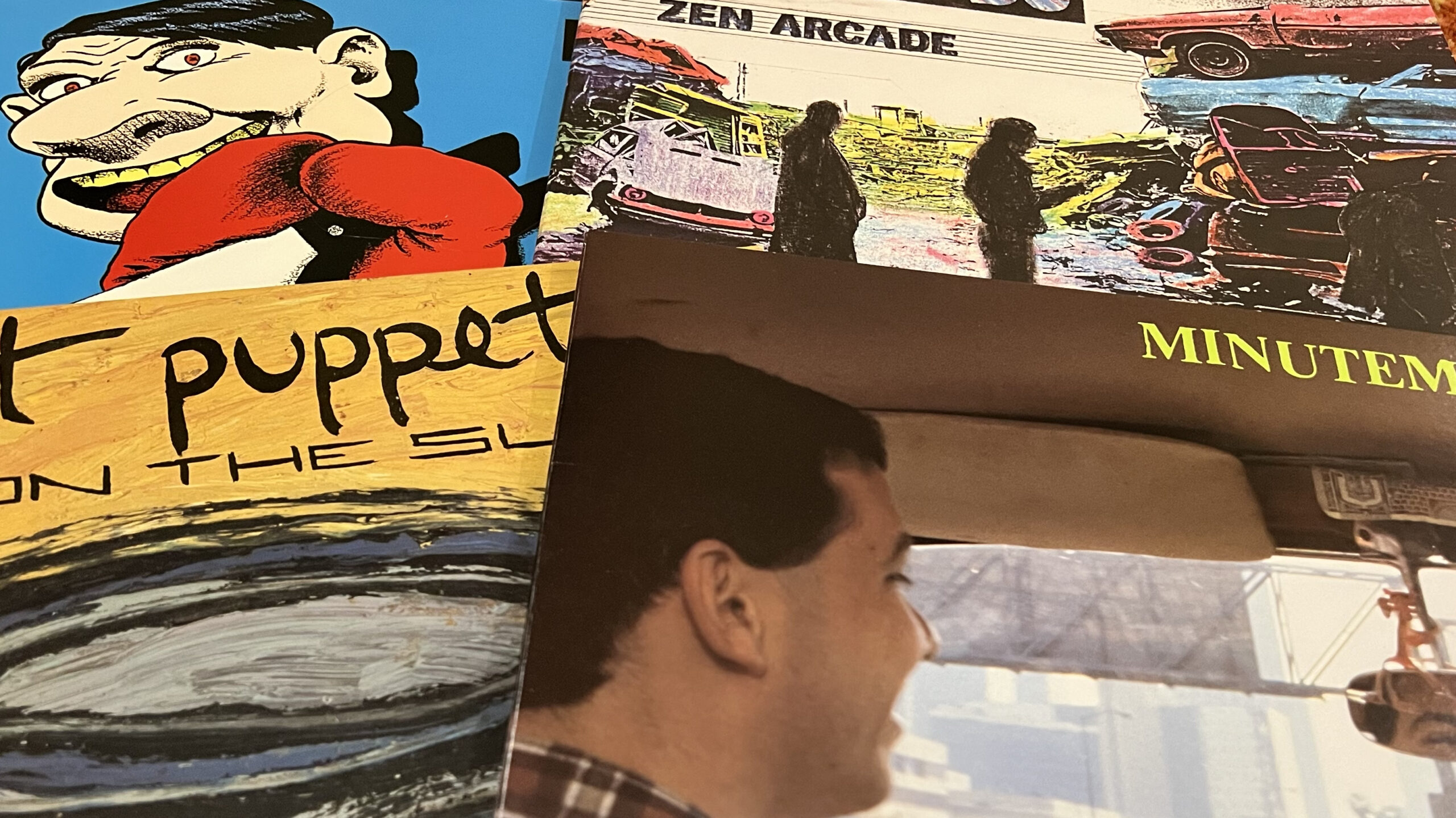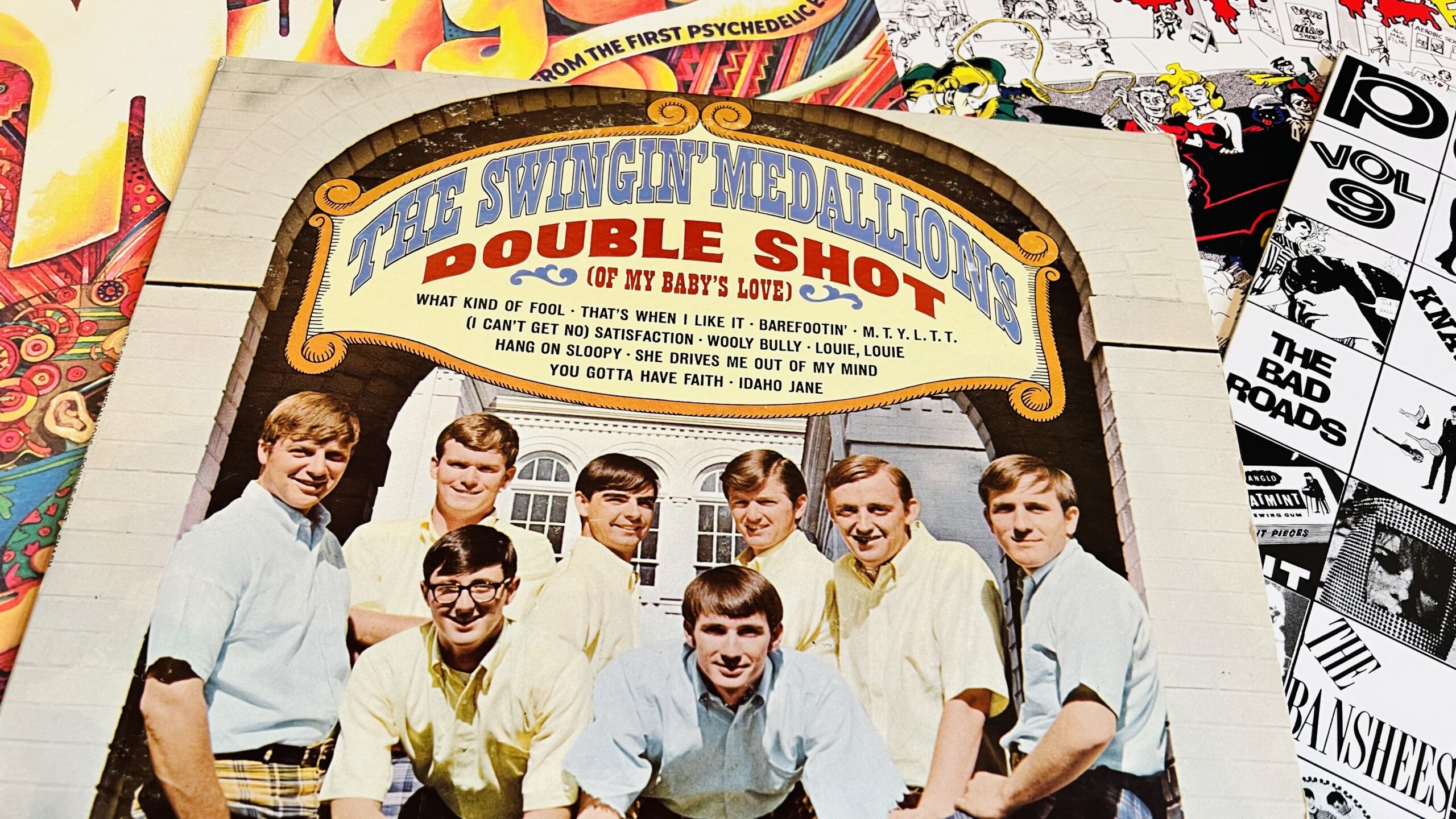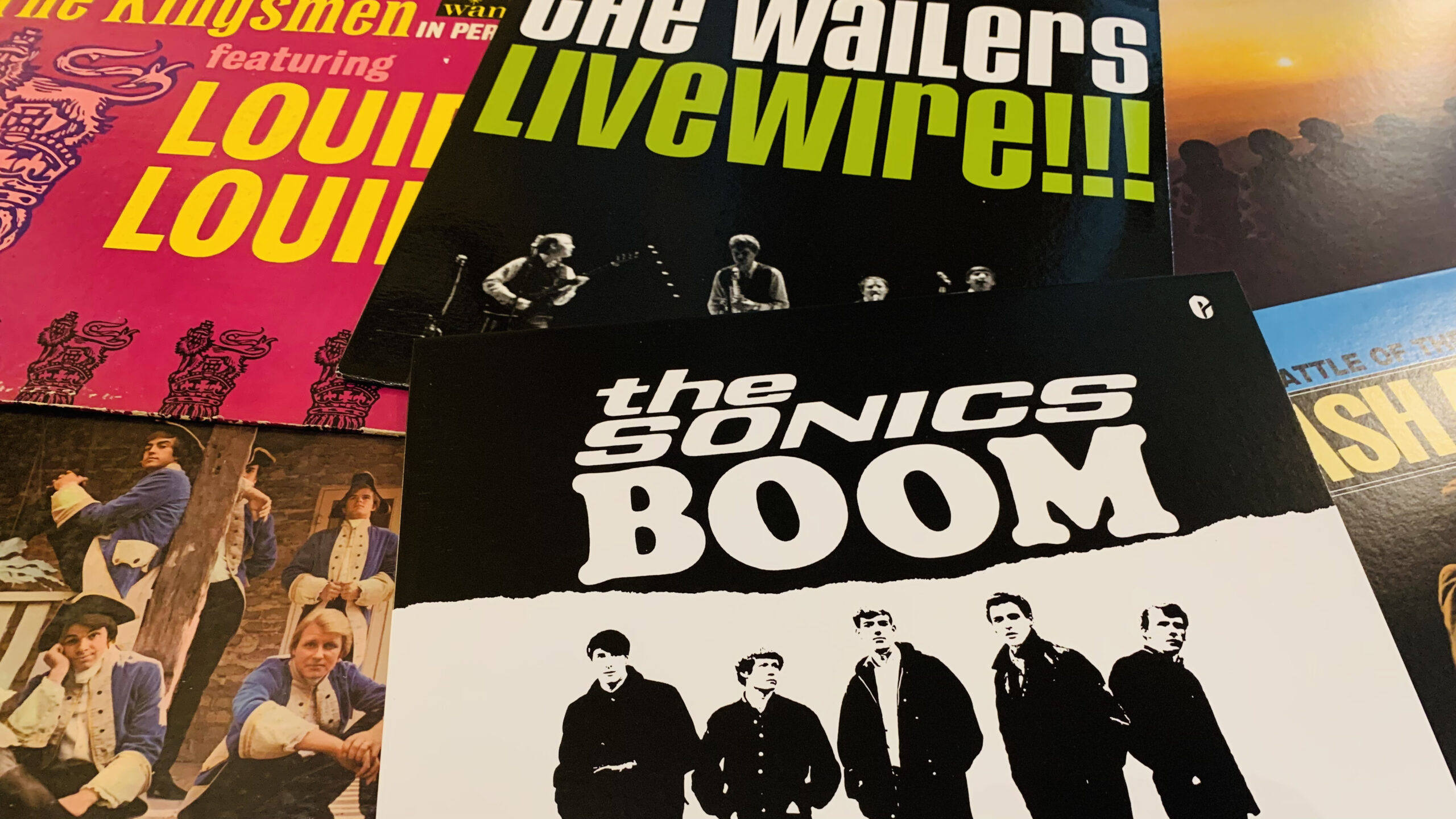
From Texas, we now head north to the state of New York. Rarely since its founding has New York City receded as a focal point of American culture, and the sixties were no exception. However, throughout the entire Empire State, garage bands were refining their chops in hopes of making waves in the Big Apple, and parlaying that regional attention into national success. After all, while Chicago, Detroit, Los Angeles, and other cities were challenging it, NYC remained at the forefront of the American cultural scene.
Despite this, most of the bands featured here would remain obscure, at least until garage rock enthusiasts tracked down their work years later. One such aficionado was a Manhattan-born rock journalist – and sometimes guitarist – named Lenny Kaye. Working with Elektra Records founder Jac Holzman, Kaye would assemble a compilation project that he originally envisioned as a multi-volume exploration of various regional garage rock scenes (sound familiar?). Eventually released as a two-LP set in 1972, Kaye’s Nuggets: Original Artyfacts from the First Psychedelic Era would not only establish a template for the reissue market, but it would also rekindle interest in some of the great lost garage (or as Kaye called them, “punk”) classics of the sixties.
Unsurprisingly, New York was well-represented on Nuggets by half-a-dozen area bands, but this merely scratched the surface of the regional garage/punk scene. Befitting of New York’s long-standing status as one of the most diverse cities in the world, the groups that constituted this scene varied wildly in sound, aesthetic, and ambition. Kaye’s Nuggets tended to focus on the more polished garage bands of the area, but subsequent compilations would unearth a fascinating mélange of tracks from groups that specialized in more raw, scuzzy sounds that anticipated the punk explosion that loomed on the horizon.
It’s those rough-around-the-edges, homespun tracks that dominate this particular feature, though some of New York’s more successful groups – including a few that were affiliated with major labels – are represented as well. All of them – including one that stands on the shortest of short-lists of the most influential bands of all-time – are treated equally, with one representative track apiece. For some, this constitutes virtually their entire recorded output, while for others it only scratches the surface of their catalogs.
By now, you probably know the drill with the playlists. The YouTube one gathers all thirty tracks from this feature. The Spotify playlist collects the twenty-two that were available at the time of publishing. Again, several of the best tracks on this feature can only be found on the complete playlist. Enjoy!
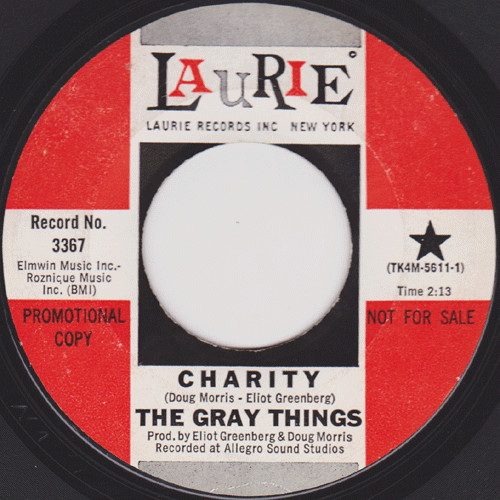
The Gray Things had a story not unlike that of hundreds of other sixties-era garage bands. Hailing from Albany, the group traveled to New York City in late 1966 to audition for Laurie Records. The label chose one of the band’s original tracks to record, but not before producers Doug Morris and Eliot Greenberg re-wrote the lyrics (without crediting any of The Gray Things as co-songwriters). Even though “Charity” would gain some radio play throughout the region, the pounding track was soon forgotten by all except for those who had played on it – including Laurie, who did little to promote it.
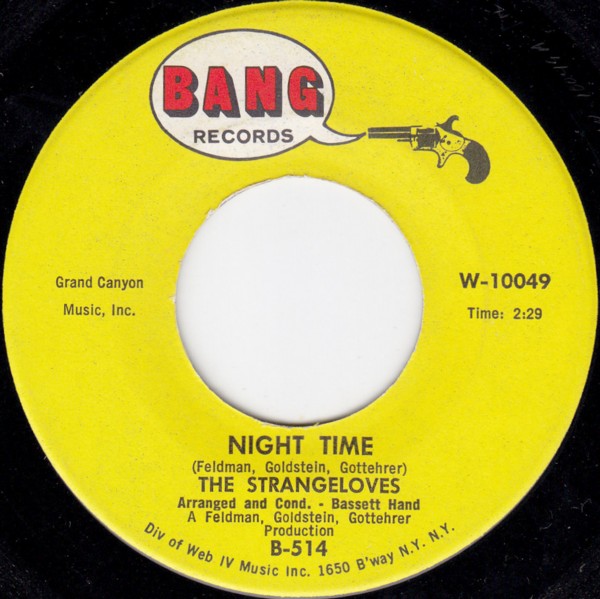
Best remembered for their infectious hit “I Want Candy” – whose tribal drums and slinky guitar riff are probably more garage-y than you remember – The Strangeloves were formed by a trio of New York songwriters who tried to fashion themselves as an Australian act. Their 1965 A-side, “Night Time,” was given a prime spot on the first side of Nuggets. Stomping and insistent, the track may not have the garage pedigree of some of the other songs on this list, but it effectively captures the sound.
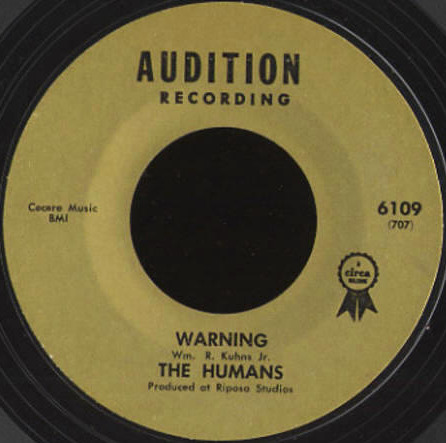
From the small town of Albion, The Humans were a six-piece group that released a lone single for the Rochester-based Audition Recording in 1966. Written by guitarist Bill Kuhns, “Warning” is carried by its prominent electric organ and the vocal work of Dick Doolan and Danny Long. The group began to splinter shorty after its release – prompted by Long’s death in a car accident, and the looming Vietnam War draft – but “Warning” remains an exemplary slice of garage rock.

Something of a theme song for The Tigermen, “Tiger Girl” was the first of two A-sides for the Olean quartet. Led by the organ work of John Farrell and featuring a commanding performance from vocalist Tom Consedine – both of whom co-write the track – “Tiger Girl” and its follow-up (“Close That Door”) have been featured on a number of garage rock compilations.

Sure, it may have the blues deeply embedded in its DNA, but the A-side to the debut single from NYC’s The Groupies is a snarling, punk-anticipating classic. Released in early 1966, it’s not hard to draw a stylistic connection between the aptly-titled “Primitive” and the proto-punk of the yet-to-form Ann Arbor, Michigan quartet, The Stooges.
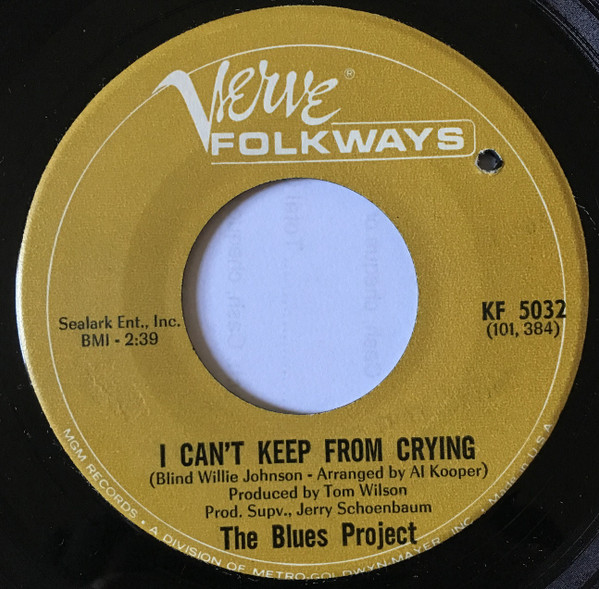
The Blues Project were among the more successful New York City rock acts to emerge in the mid-sixties. While their band name certainly hints at the group’s core sound – and this adaptation of a Blind Willie Johnson song offers further confirmation – The Blues Project had a forward-thinking approach that nodded to both garage and the nascent psychedelic scene.
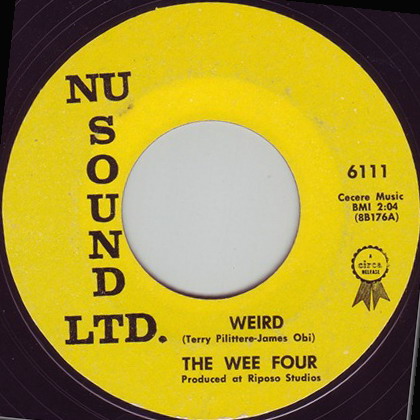
The Wee Four allegedly settled on their band name due to the diminutive stature of its members, but there is nothing underwhelming about the Rochester group’s lone A-side. Released in the summer of 1966, “Weird” is a briskly-paced track that displays both impressive songwriting and nimble musicianship – especially for such a young group.
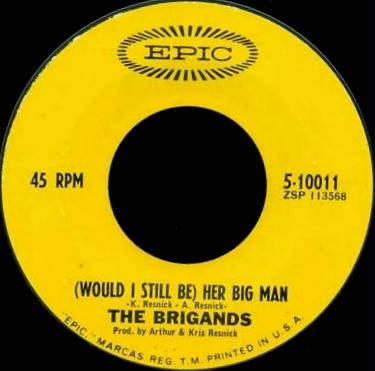
A favorite of many garage enthusiasts, the B-side from The Brigands’ first and only single appeared on the second volume of the Back From the Grave series in 1983, and was also part of Rhino’s 1998 extended Nuggets reissue. “Her Big Man” tackles the class politics that stood at the center of several of the garage scene’s most memorable recordings, as the Queens band sharply and empathetically details the insecurities of its working class protagonist.

While its A-side, “Garden of Eden,” was a surprisingly sophisticated production for a mid-sixties garage band, it was the B-side from this group of Yonkers teenagers that has lived on as a favorite of garage rock collectors. Both the writing and recording of “Lela” were quickly hammered out, but the track’s kinetic energy gives it an undeniable charm.
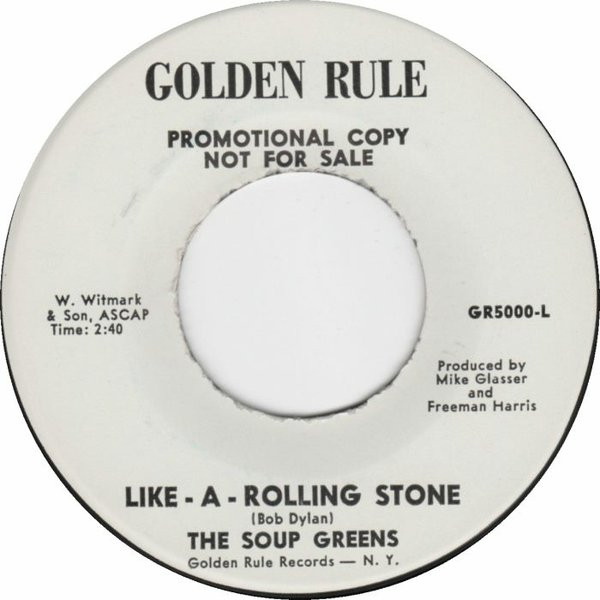
In the sleeve notes for the first volume of the Pebbles series – where this track made a memorable appearance – it is mentioned that “punk bands of the ’60s could transform any song into “Louie Louie.” Yeah, that’s pretty much what happens here. The basic chord structure and “How does it feel?” hook remain, but nearly everything else about Bob Dylan’s epochal “Like a Rolling Stone” – the winding verses, the Napoleonic imagery, Al Kooper’s unforgettable Hammond organ riff – has been tossed aside. It’s understandable how someone in love with the original might be inclined to dismiss this version outright, but I’d argue that, somehow, the true essence of it still remains.
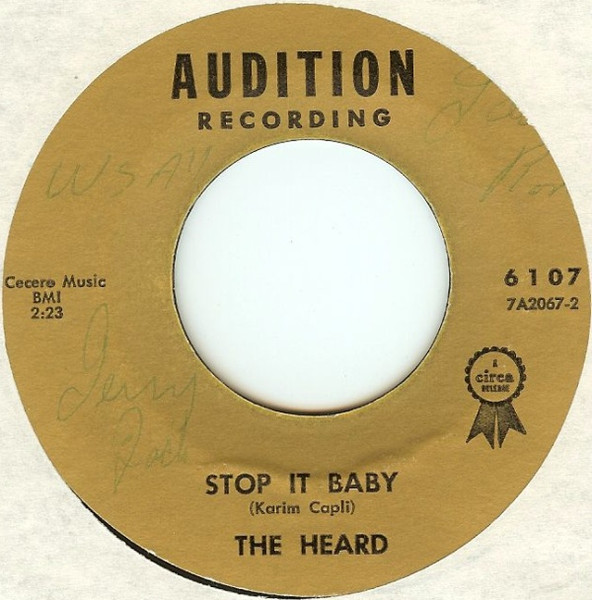
Another Rochester group, The Heard released just one single after forming from the ashes of another area band known as The Groop Ltd. Their lone B-side, “Stop It Baby” utilizes a jagged, Kinks-like riff to excellent effect, propelling the blues-based track through two-and-a-half-minutes of swaggering proto-punk.
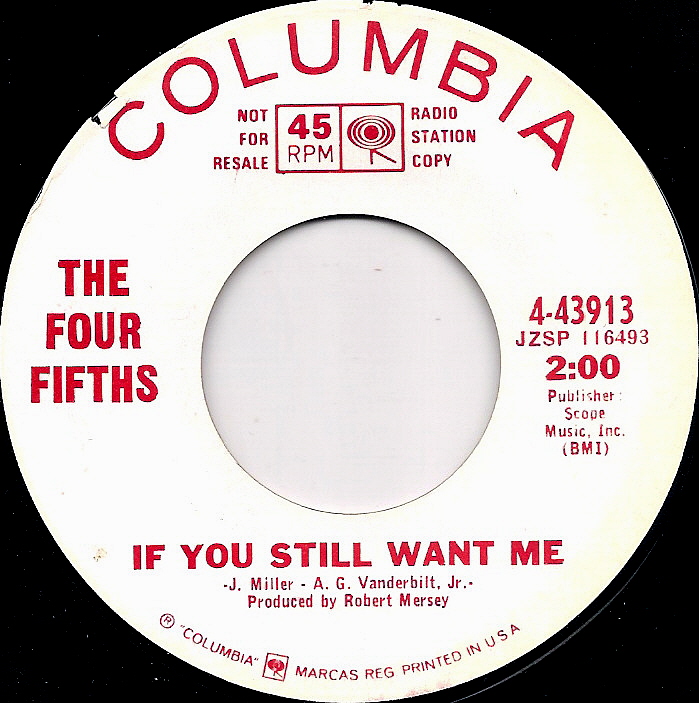
Those who have been following these features may be able to predict that this debut A-side from Manhattan’s The Four Fifths is one of my favorite tracks here. After all, “If You Still Want Me” checks off a lot of my key boxes: jangly guitars (including a 12-string); group harmonies; melancholy lyrics; and a quick pace. Unfortunately, the backing of a major label (Columbia) wasn’t able to deliver this one to the masses, but that doesn’t take away any of its charm.
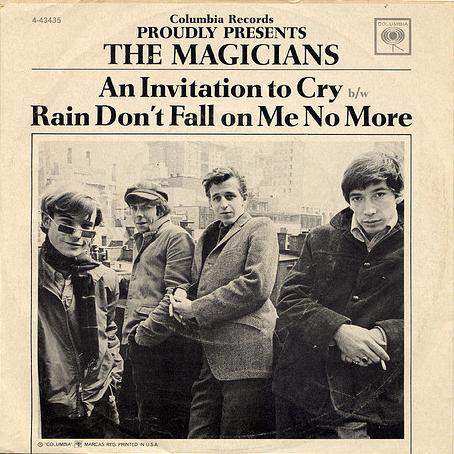
Another band that recorded for Columbia, The Magicians likewise failed to attract a large following, despite the excellence of this 1965 debut A-side. While the moody, downtempo track wouldn’t exactly set the charts on fire, three of the band’s members would find later success in a songwriting, production, and management capacity, through their affiliations with artists like The Turtles and Bruce Springsteen. The Magicians themselves earned a pretty sweet consolation prize in 1972, when “An Invitation to Cry” was included on the original Nuggets compilation.
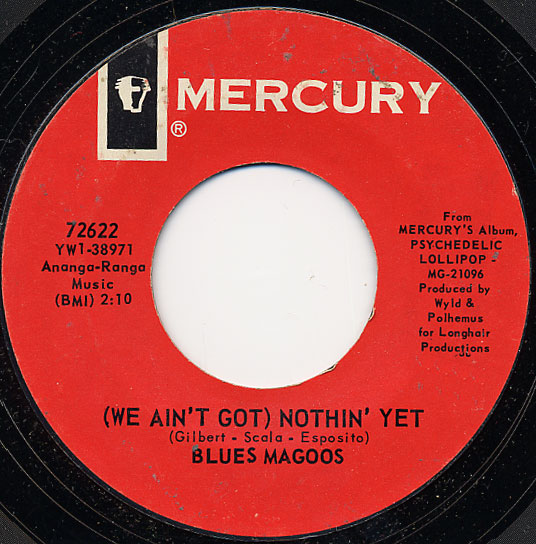
One of just a handful of bands in this feature to record a full-length album, Blues Magoos released five LPs prior to going on hiatus in the early seventies. Generally considered to be the band’s peak, “(We Ain’t Got) Nothin’ Yet” led off the group’s 1966 debut, Psychedelic Lollipop. While the promised psychedelia is downplayed through much of the album, “Nothin’ Yet” brings the goods with its memorable guitar and organ riffs, paired with inventive production.
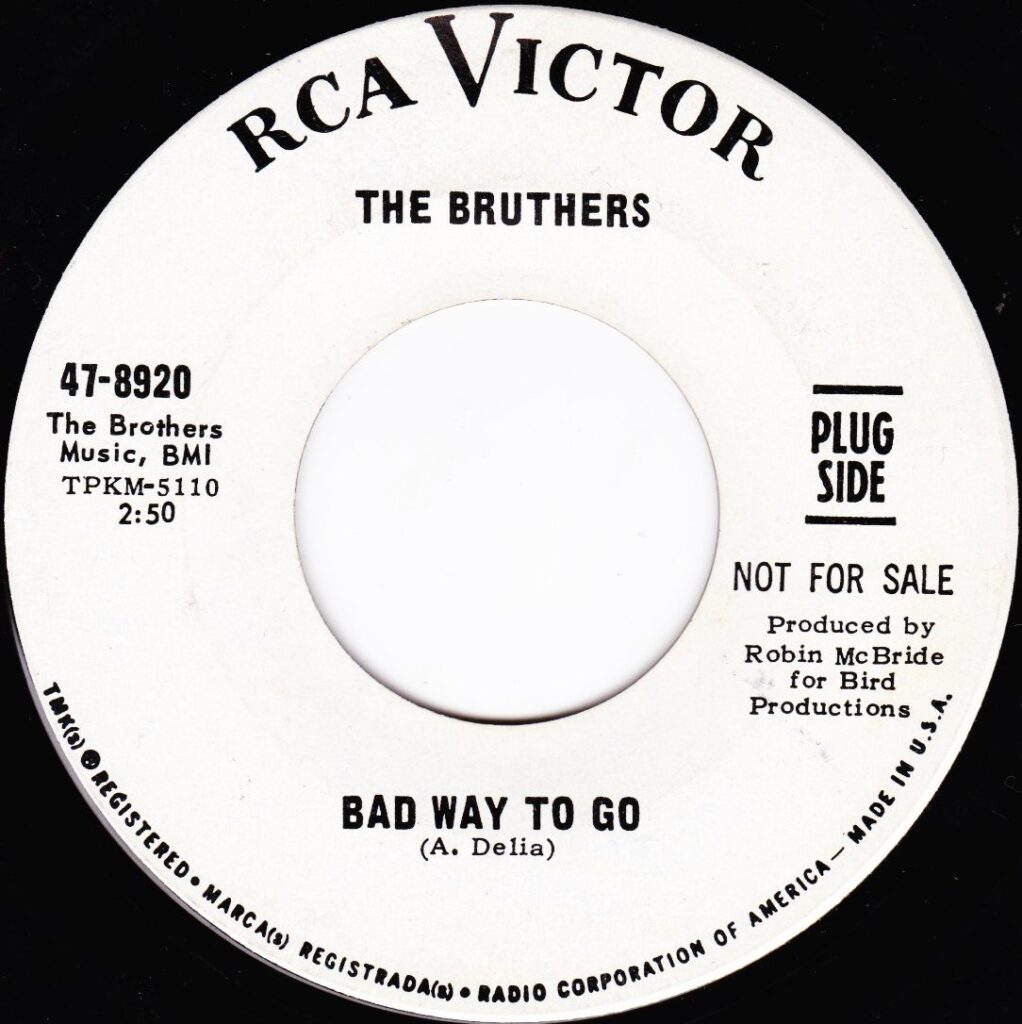
Formed by four brothers from Pearl River, The Bruthers would land a contract with RCA Victor in 1966, but when their lone A-side failed to make much of an impact, the group split off into other endeavors. The entire recorded output of the Delia brothers would eventually be released by the reissue label Sundazed in 2003, but the crown jewel of the collection remains that largely-forgotten single. “Bad Way to Go” matches sharp songwriting with tight performances and plenty of attitude – more than impressive enough for it to be considered a garage classic.

While their take on Otis Redding’s “Respect” would land on Nuggets in 1972, it’s this 1966 original that stands as the peak of The Vagrants’ catalog. One look at the sleeve art for “I Can’t Make a Friend” indicates that this band – which featured Leslie West, later of Mountain fame – counted The Rolling Stones among their influences, but this track dials up the dissatisfaction to a considerable degree, and crafts a churning proto-punk gem in the process.
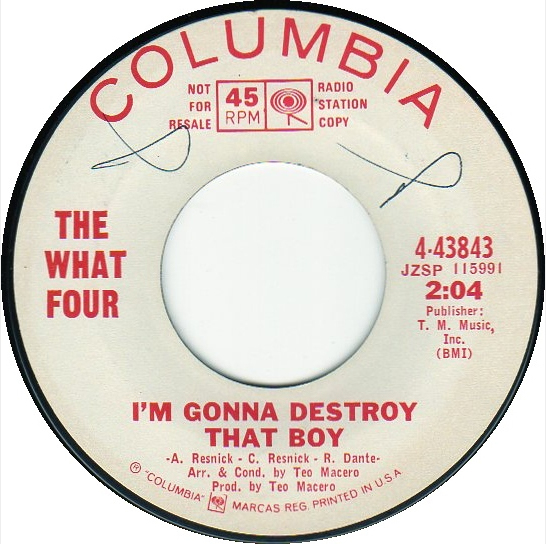
Matching the menacing nature of its attention-grabbing title, “I’m Gonna Destroy That Boy” is a cracking track from Manhattan’s The What Four. The final A-side from one of the all-too-rare all-female garage bands, “Destroy” remains surprisingly little-known – especially given the fact that it was released on a major label.
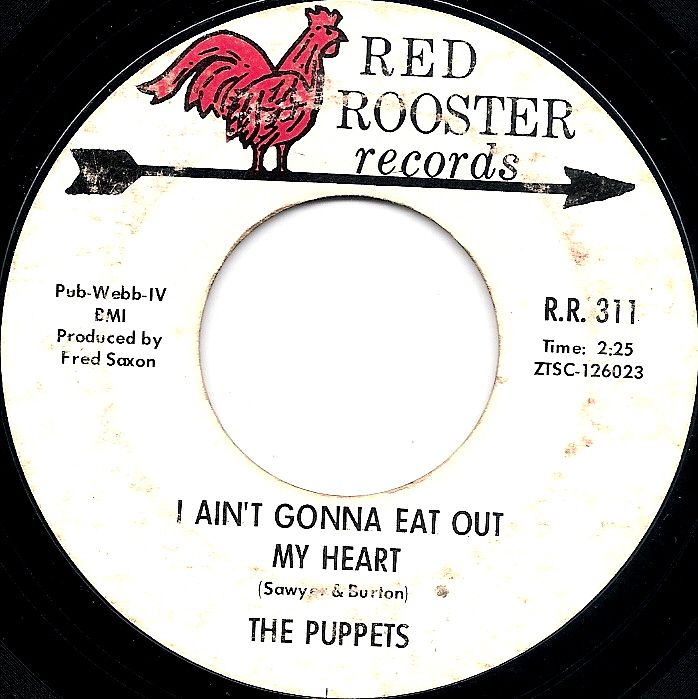
Resurrected as part of the solid 1987 compilation Girls in the Garage, “I Ain’t Gonna Eat Out My Heart” was the B-side to the lone single from The Puppets. There doesn’t seem to be a lot of info about the NYC group online – so I’m not sure if they were also one of the extremely rare all-girl rock bands of the era – but this is a captivating track nonetheless.
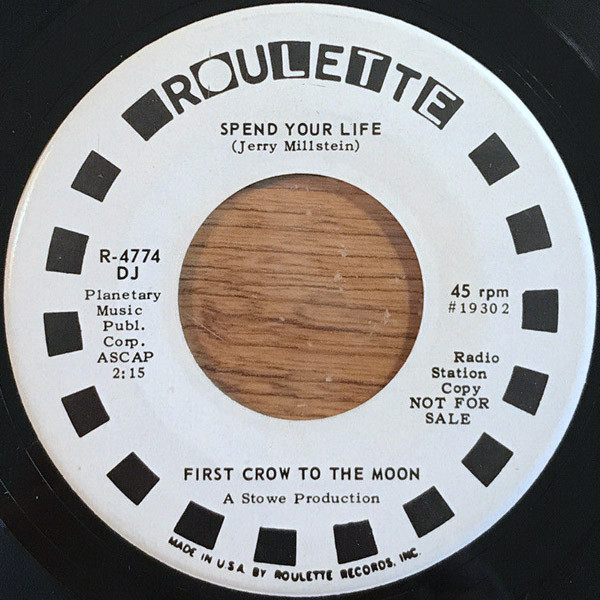
Formed in Brooklyn in 1965, First Crew to the Moon would release one single on the local Roulette label. Accounts vary as to which track was the intended A-side, but when the single was pressed, the group was unintentionally identified as First Crow to the Moon on its label. The standout track, “Spend Your Life” is a refreshing blast that finds an appealing midpoint between surf and psych. Sustained success was not to be for the group though, and they would disband after guitarist Alan Avick tragically died of leukemia in 1967.
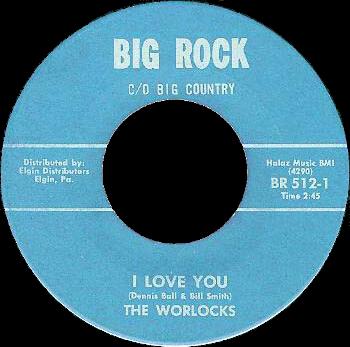
The B-side to the group’s only single, “Stay By Her Side” is a charming track from The Worlocks. The band – which formed in Port Byron in 1964 – traveled to neighboring Pennsylvania for their lone studio session, which also generated the energetic, surfy A-side, “I Love You.” However, it’s the understated flip that gets the call here, with its jangly guitars and melancholy vocals providing ample hooks.
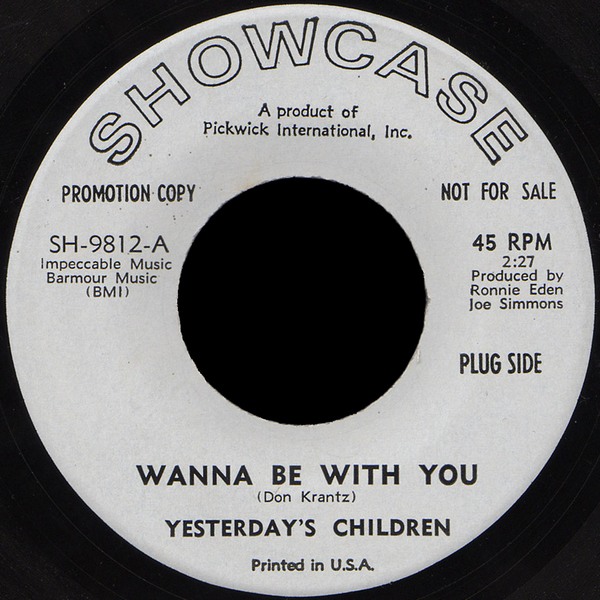
One of several bands from the sixties and seventies to employ the moniker of Yesterday’s Children, this Long Island sextet made an impressive showing on the A-side to their only single. “Wanna Be With You” sounds like it could have originated from a group jam of Them’s immortal garage classic “Gloria,” but it stands on its own merit.
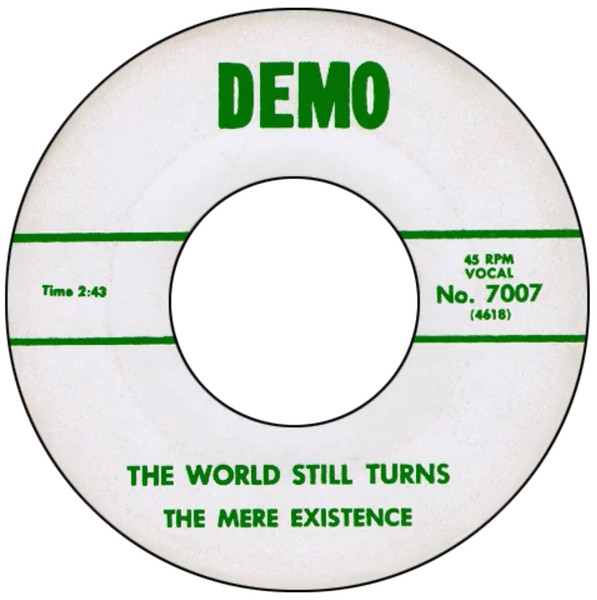
The bold printed “DEMO” on this lone release from Binghamton’s The Mere Existence may actually be the name of the small label that put it out, but it could also serve to prime listeners for what is certainly the most amateurish track on this list. Despite its rough nature, “The World Still Turns” is a winner, whose homespun charm only serves to amplify its appeal.
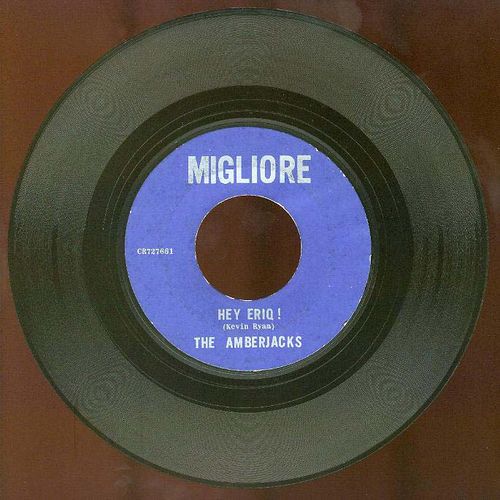
Hailing from the town of Baldwin, The Amberjacks sprinted out of the gates with an impressive debut single. Written by guitarist/vocalist Kevin Ryan, “Hey Eriq!” is a sharp, nimble shot of proto-punk that showed immense promise for the quartet. However, the group appears to have lost its momentum quickly, as this would be their only release.
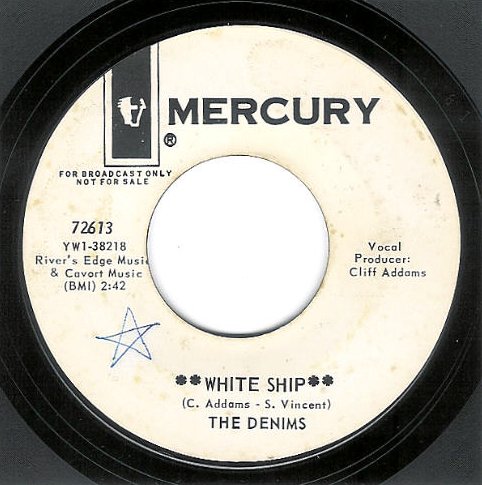
Far more prolific than most of their garage contemporaries, the Queens sextet The Denims released six singles – eleven unique tracks in total – between 1965-66. The A-side to their final single, “White Ship” stands as the apex of their output. Drifting into the psychedelic sounds that were beginning to consume the garage scene by late 1966, the song augments its trippy instrumentation with surrealistic imagery, all to impressive effect. This one’s a definite keeper.
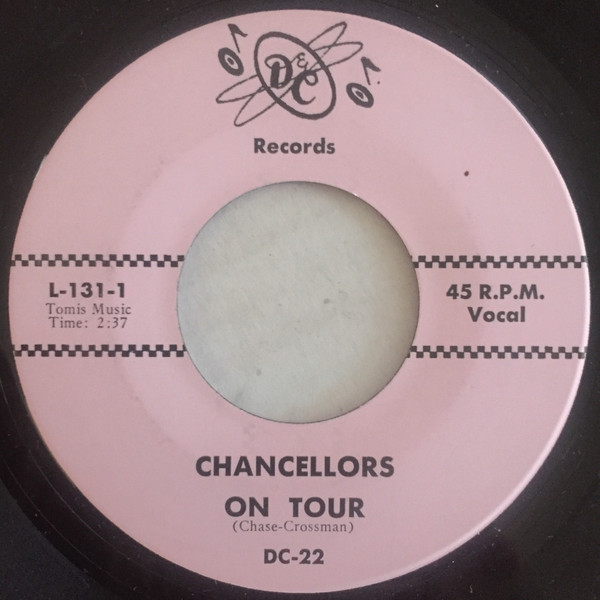
Backed by a cover of “Route 66,” “On Tour” completes a travel-themed debut single from Potsdam’s The Chancellors. The original composition – penned by the band’s vocalist Bruce Crossman and guitarist Pete Chase – is definitely a punk predecessor, with its insistent beat and surging dynamic shifts. It would be the group’s only release, but one worthy of its praise from garage enthusiasts.
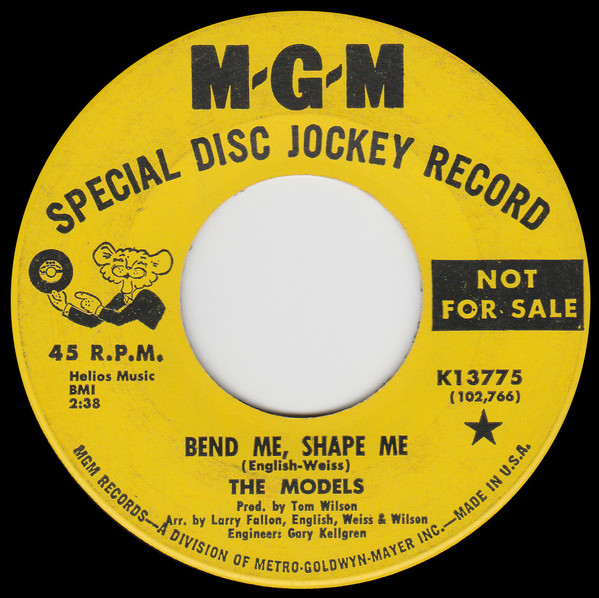
Biographical details on the group known as The Models are scarce, but the scraps of information that are available are intriguing. Assembled by producer Tom Wilson, the group was rumored to consist of Vogue fashion models who only recorded a lone single before disbanding. Wilson’s production work taps into the burgeoning psychedelic scene, but the track’s ample fuzz keeps it firmly in the garage wheelhouse. While some might view the psych elements as heavy-handed, they add an edge that was absent from subsequent recordings of “Bend Me, Shape Me.”
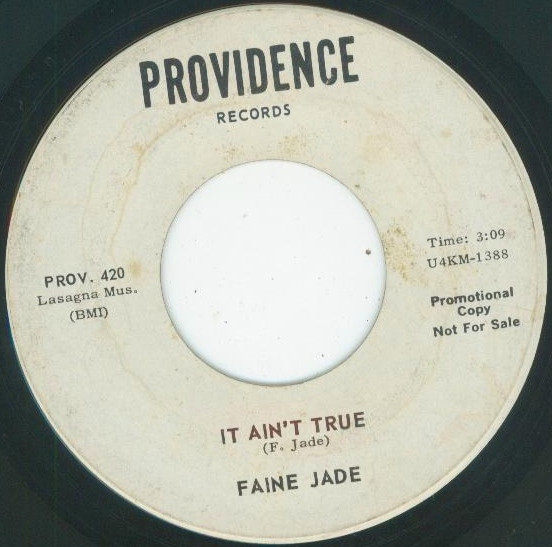
The stage name of Chuck Laskowski, Faine Jade was another New York artist who merged garage and psychedelia, perhaps most impressively on the B-side to his first single. “It Ain’t True” has become a staple of sixties compilations since it first appeared on 1979’s Acid Dreams. It’s a unique track: one whose trippy elements pull it toward the psych end of the spectrum, but whose rough hewn edges keep it in the garage camp.
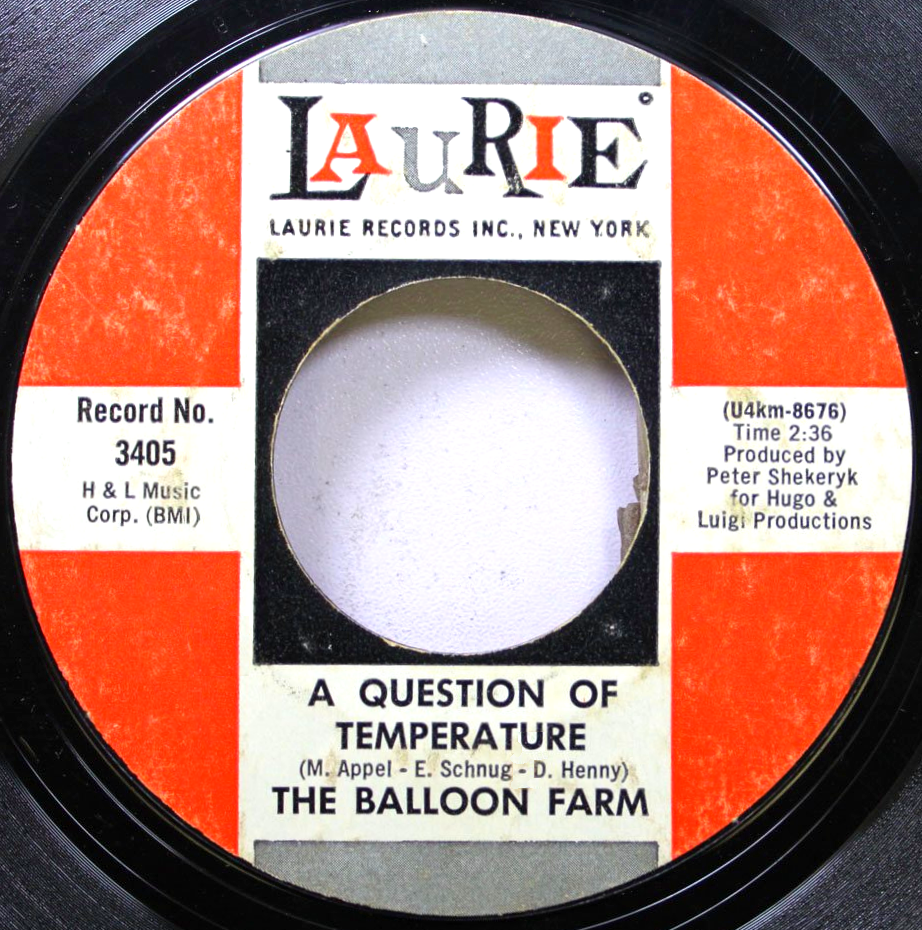
Co-written by Mike Appel – who had also been a member of The Magicians – “A Question of Temperature” is the best-known track from The Balloon Farm. Again, psych influence is prominent here – and the sound effects are likely to cause some division among garage purists – but the song’s killer fuzz guitar riff and stomping beat made it a natural fit on the expanded edition of Nuggets and several other garage comps.
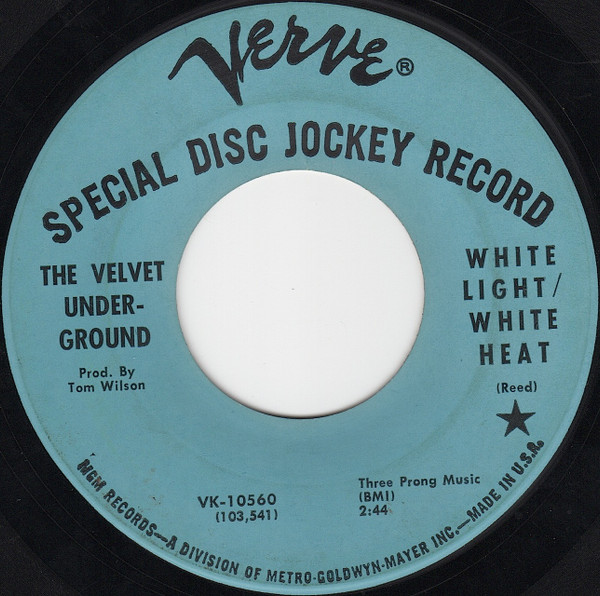
The hardest question that I grappled with in assembling this list was whether or not to include The Velvet Underground. To me, their garage credentials – especially on this title track to their second album – are clear. It’s just that the band’s significance goes so far beyond a single genre, that it’s perhaps reductive to put them here; not to mention that their presence might overshadow some groups who are far more in need of recognition. However, if I could justify including The Mothers of Invention and Love in the Los Angeles feature, and will put The Stooges in the Upper Midwest one, Lou Reed and the gang belong here.
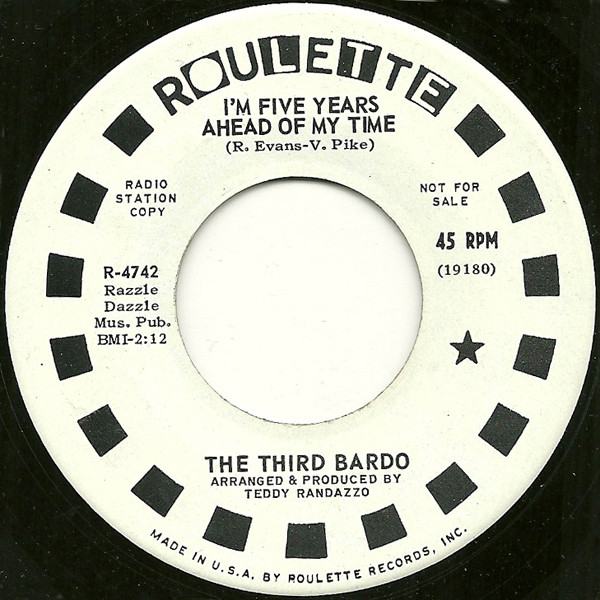
The Third Bardo sound far more polished – or accomplished – than the average garage band with one single, but that’s all the New York City band put out during their brief existence. It’s their lone A-side that stands as not only their unquestionable peak, but as one of the key garage tracks of its era. “I’m Five Years Ahead of My Time” may sound boastful – and it’s probably more in line with its time, rather than ahead of it – but it backs up any perceived bluster with a sinister track that stands among the true garage giants.


